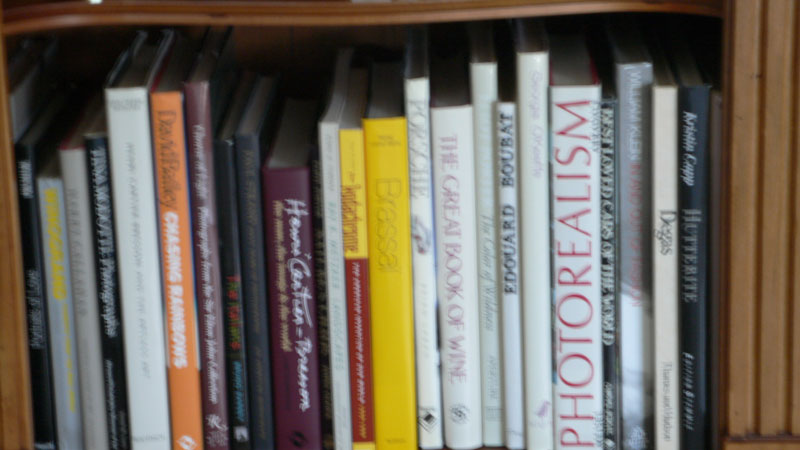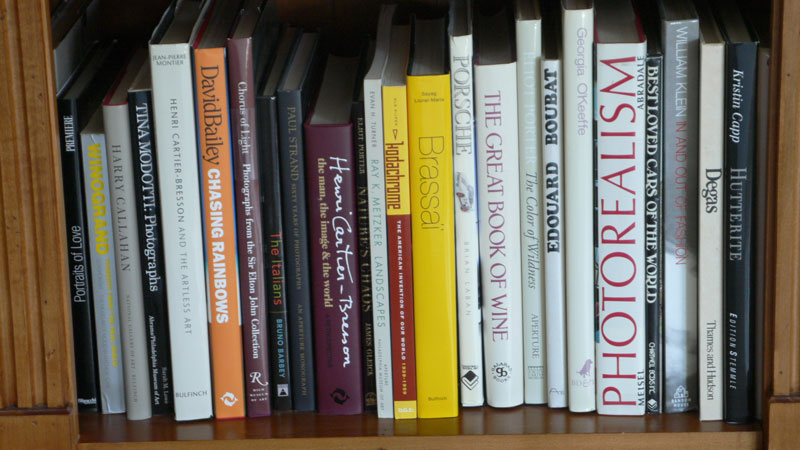Vibration reduction at work
The Lumix LX1 uses two motion sensors, one for vertical and the other for hoizontal motion. These feed the opposite of any motion they detect to the lens assembly to reduce the effects of definition-robbing camera shake on the image. Panasonic calls it ‘Mega OIS’ which sounds rather grand, no? A related benefit is that with the two shutter speeds thus gained – meaning you can use 1/15th where 1/60th was safe before – is that ISO 100 becomes in effect ISO 400, with attendant benefits on reduced sensor noise; as I illustrated earlier, the camera’s sensor is somewhat noisy at ISO 400.
Sceptical?
Here are two pictures, taken seconds apart, of one of my bookshelves, hand held, taken at the longest lens setting (to emphasize shake) and 1/4 second at ISO 100. Care to guess which one had vibration reduction switched on?


I use Mode 2 OIS, meaning the OIS is switched on the moment the shutter is pressed; I have no need of Mode 1 – on all the time – as I use my glued on 28mm Voigtlander optical viewfinder to compose, not the LCD screen. And as the camera always starts with the lens at 28mm no matter where it was when switched off or powered down, there is no risk of using an optical viewfinder not matched to the lens.
This wonderful vibration reduction system will add more quality to a picture than any amount spent on expensive glass without this feature. I like to think that my 28mm f/2.8 Lumix Leica lens has just become an f/1.4, which, in effect, it has. Anyone with a 28mm f/2 Leica Aspherical Summicron on their Leica care to challenge me at 1/4 second? 13″ x 19″ prints at two paces. And by the way, your competing camera and lens will have cost some ten times the price of the Lumix LX1. Too bad. Someone steals your rig and you have a problem. They can’t steal mine unless they requisition my jeans, because that’s where this little jewel resides.
Oh! and did I mention the widescreen capabilty you see above?
second post; program did not like my email. Try again, but save first, this time!
Loved your review. I will get one. The LX-1 and LX-2 are the same price on bhphoto’s site—any advantage of one over the other, in your view?
As well, some additional detail on how you lined p te finder would be appreciated. I will probably get the 28/35 minifinder, just to have both; v. similar price. Regards, Kit
Kit – I cannot speak to the LX-2 as I have not used it. I would wait for DPreview.com to review it before making a decision – their reviews seem consistently objective and free from conflicts of interest. However, as the LX-1 has been discontinued, you should expect to pay less for it than for the successor LX-2.
Lining up the finder is easy. Place the camera on a tripod, place the loose finder on top until its field of view coincides with that on the LCD screen in the camera, place a small piece of masking tape along the left foot of the finder as a guideline, then glue the finder using this guide.